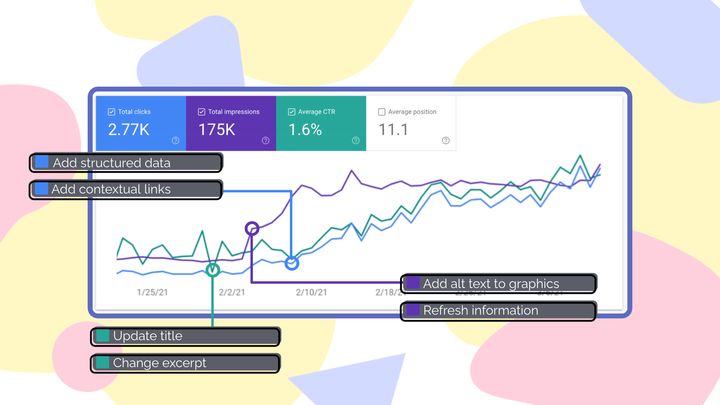How to Get Started with SEO
We've grown our website to millions of monthly active users with zero ads spend. This article shares my advice to entrepreneurs who want to leverage Google Search to get more traffic and sell a product or service. Get started with SEO in two steps, for free.
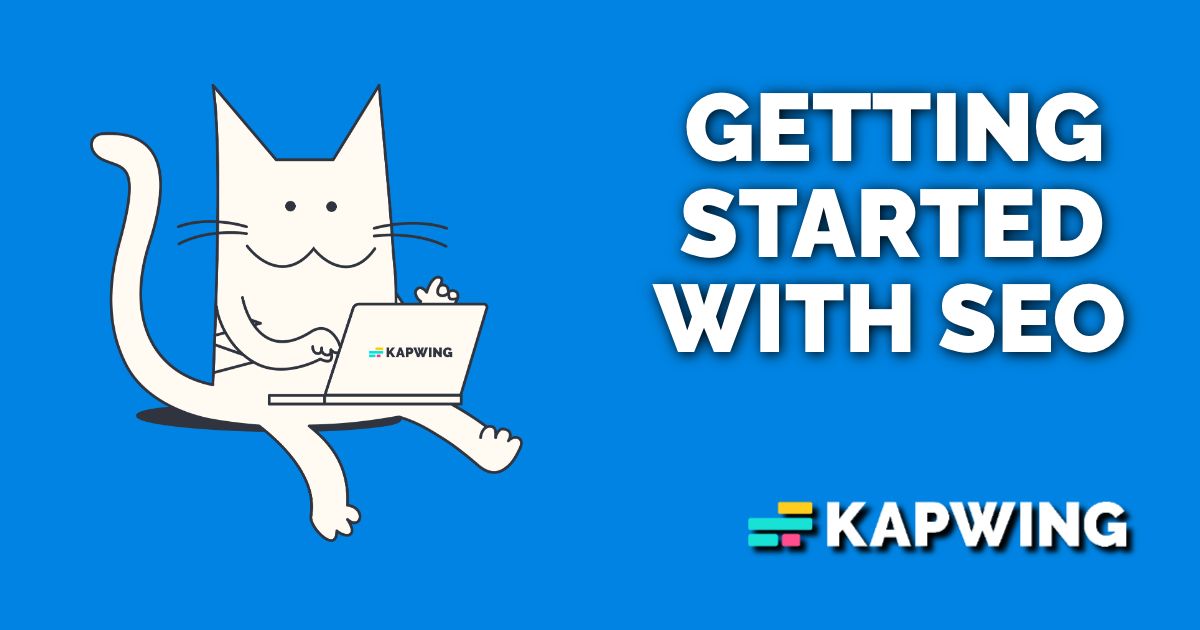
I'm the cofounder / CEO of a startup called Kapwing, an online video editor for modern creators. Kapwing gets millions of website visitors every month through organic Google Search, supporting a business nearing 8 digits in revenue. Our knowledge of SEO has also helped us grow our company's YouTube channel to 170k subscribers.
This article is a guide to getting started with SEO. It's designed for entrepreneurs who are trying to grow traffic to their website, but don't have any previous background or expertise in SEO. Kapwing's mission is to serve creators, so I also hope this article can help creative professionals and founders leverage search to grow their audience, brand, and customer base organically.
I’ve tried to keep this guidebook as brief and direct as possible.
Caveat: My cofounder and I also used to work as Product Managers on Google Search, so we've respected and paid attention to SEO from Day 1. While we've learned a lot on the journey, I'm still learning a tremendous amount about SEO myself everyday. Nothing in this article is authoritative; it's based on the experience of one person at one startup. The tides of Google Search are constantly changing, so students of SEO must be continuous learners.
What is SEO?
Let's start with a screenshot of a Google Search query: "hamster cages"
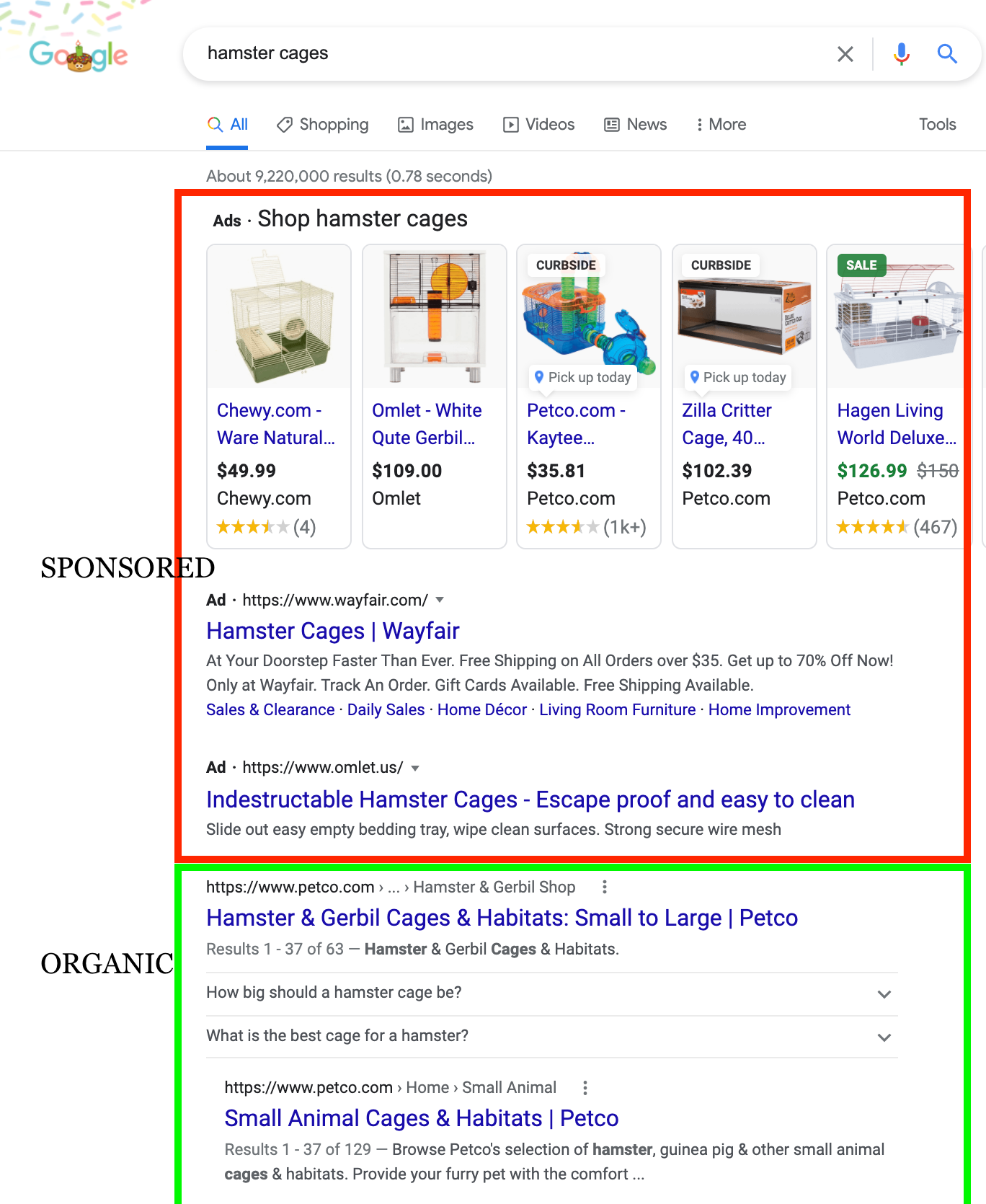
Notice that the first results at the top are marked as "sponsored." That means that a business or brand paid Google to appear in that position. Called "Search Engine Marketing" or SEM, appearing in the sponsored results requires a very different approach that SEO, which is described in this article. SEO ≠ SEM.
Below that, Google displays webpages (sometimes called "blue links"). These webpages appear “organically,” meaning that Google displays them because the Google algorithms think those websites are the best resources for your inquiry. In this example, Google recommends Petco’s catalog as the top website for hamster cages.
This example illustrates the value of SEO. Petco has a huge advantage from showing up as the first organic result because they attract views from all the people who type this query into Google with intent to buy. They likely make a lot of money a year on this query and others like it.
So how do you get Google to prefer your website for relevant queries? SEO is the the art & science of increasing your ranking in organic search results to bring more quality traffic to your website.
Why You Should Care About SEO
If you run a company that gets customers on the internet, you should care about SEO. You do not need to be a software engineer to get good at SEO; if fact, creative entrepreneurs, creators, and artists will have a head start. Here are five reasons that SEO is one of the best (maybe the best) marketing channels:
- Quantity: Billions of people are on Google, so SEO has broad reach. Google is by far the world’s dominant search engine and the gateway to the internet.
- Quality: People who search on Google have very high intent to find solutions to their problem. On search, you get to your target customer right in their moment of need and are much more likely to convert them.
- Legitimacy: Unlike ads or sales, people trust Google to an astounding degree. They trust Google so much that SEO blends into everyday life and feels like word of mouth.
- Sustainability: New people come onto the internet every day. You never "run out" of customers in your target audience.
- It's free: SEO is one of the most accessible marketing channels as it requires no capital. In a tough economy, it may be one of the only options for growth.
SEO is a good fit for almost any business, but it’s especially important for businesses that address problems that people search online for. And let’s be honest: there are increasingly few things that people buy without consulting Google. Mattresses used to be purchased offline, at a local store; now, Casper and thousands of others have moved mattress shopping online. Babysitters, cookbooks, cyber security automation: all of these product categories have relevant Google searches a business could target.
The Impact of SEO on Our Business
Here’s another example from our own website, Kapwing. We have a Video Trimmer landing page that gets about 1.2 Million impressions on Google Search and 90k clicks each month. Of those page views, more than 22k people trim a video, and a small fraction of those creators upgrade to Kapwing Pro. This landing page therefore delivers hundreds of thousands of dollars in revenue for us every year.
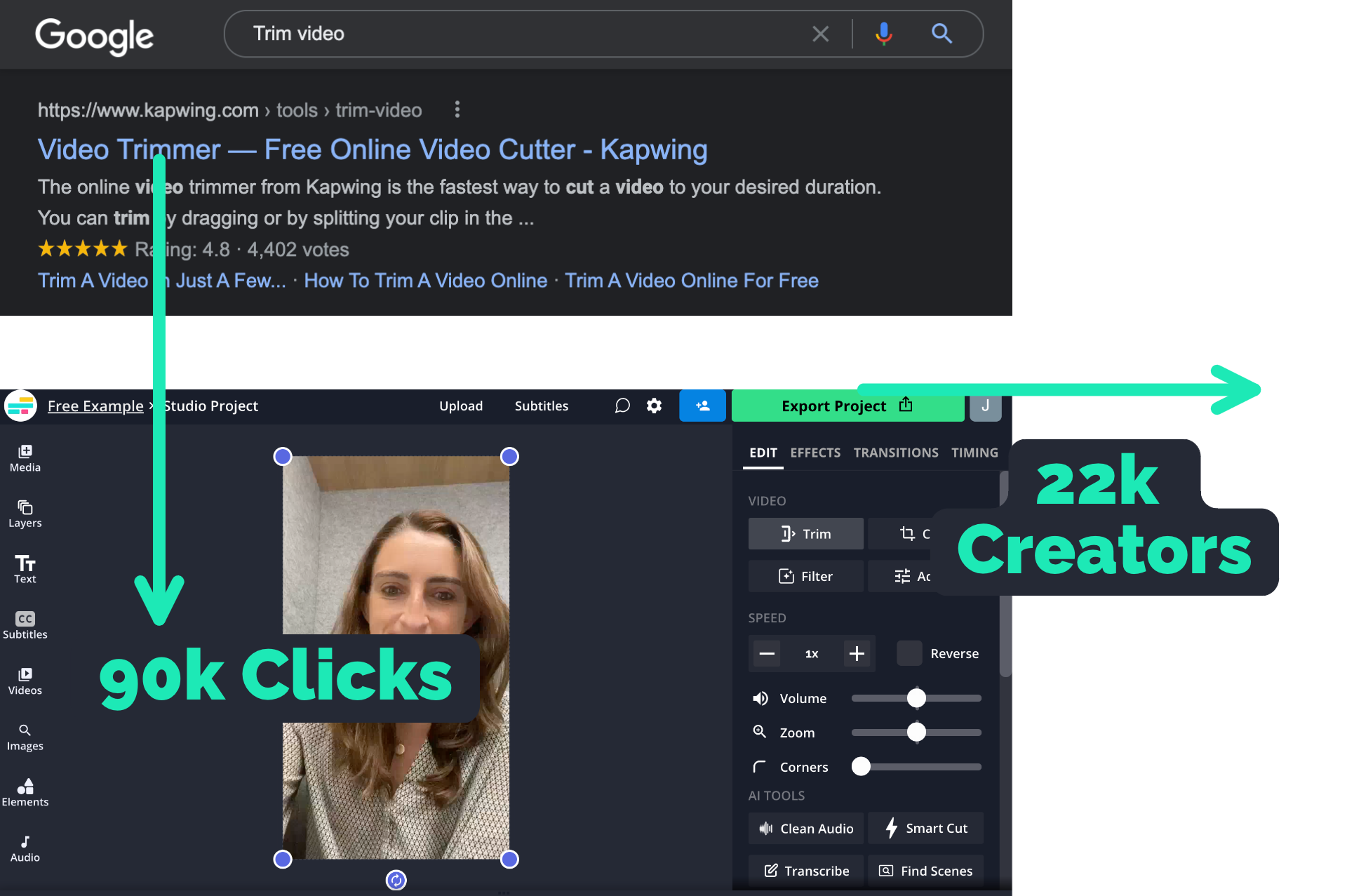
We found this search opportunity back in 2017 when video was taking off as a storytelling medium. While researching user needs, my cofounder and I noticed that most of the Google results for “Trim video” and other basic video editing queries were websites full of malware and buttons that didn’t work. So, we thought that if we built an easy, trustworthy solution for trimming videos, it would probably rank on Google above the alternatives. And it did! Now we have Trim Audio and Trim GIF pages that follow a similar model.
That’s how we started our company that now makes >$6M per year with no ads spend. This article shares how we did it and how you can too.
How to Get Started with SEO
The model I present below is obviously simplified. It's designed to be a starting point for founders who want to explore SEO but aren't sure how to get started. There are two discrete steps to getting started with SEO:
- Target search queries
- Rank for those queries
These steps can and should be explore separately.
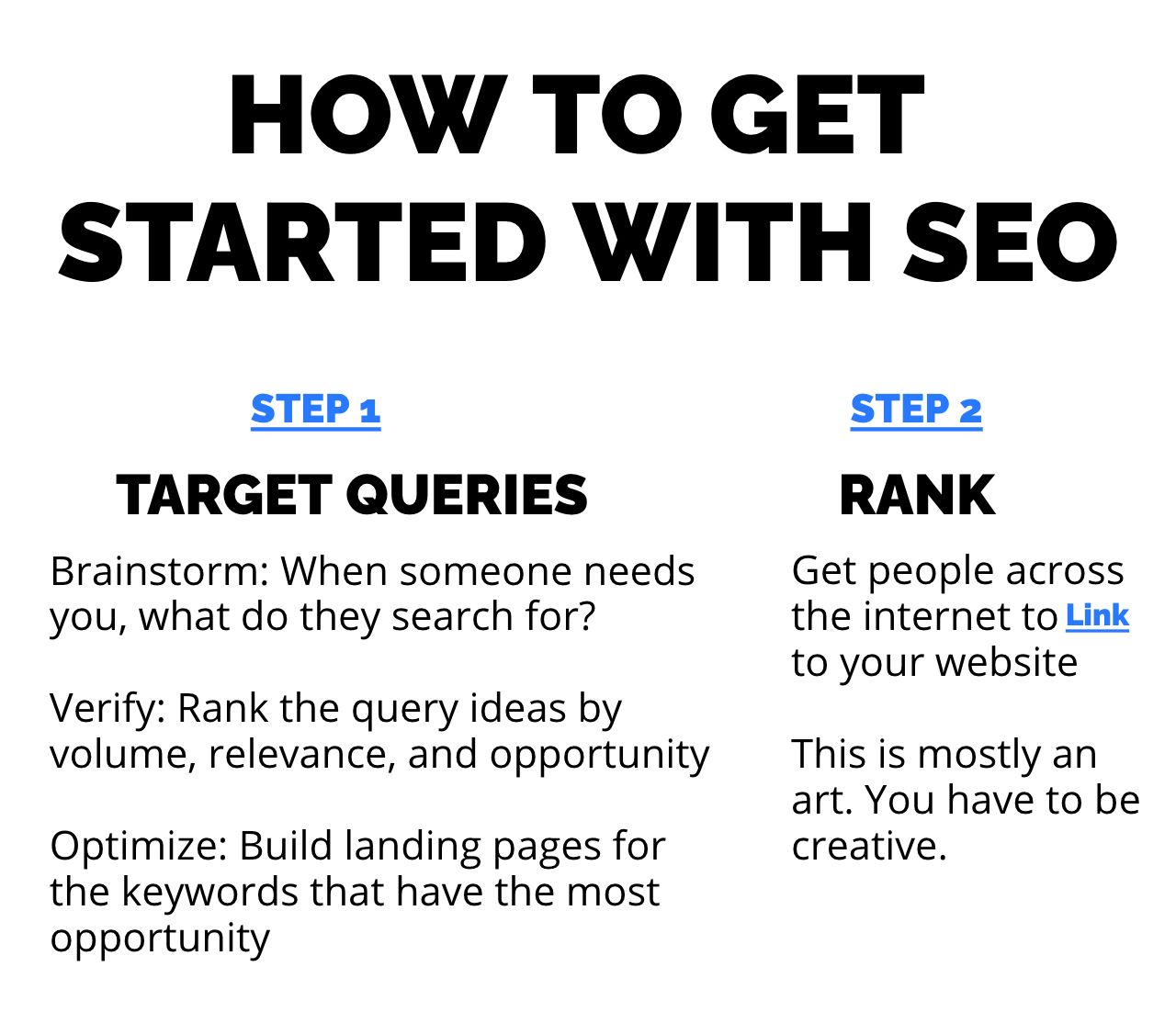
Step 1) Target Search Queries
First off, web developers need to create landing pages that are optimized for specific search queries.
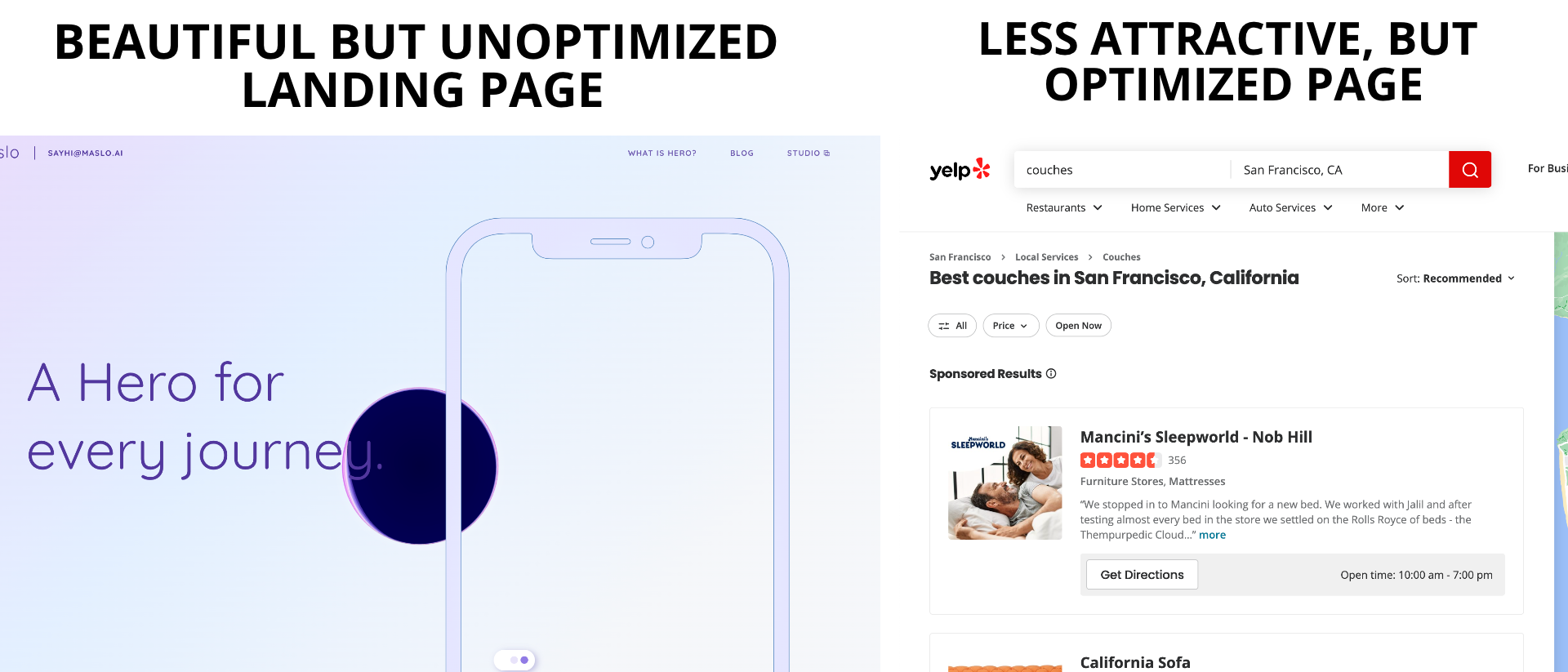
To create pages that target search keywords, you first need to decide what keywords or keyword patterns you’re going to go after.
1a) Brainstorming Queries
The first step in SEO is to brainstorm a huge list of things that your customers might be searching for on Google. Go broad. Make a spreadsheet of 1000 ideas. Think about all the possible things that someone might need, wonder, or research around the time they need your product or service. Here’s some tips on brainstorming:
Think like a searcher: Start noticing your own search habits and the habits of your friends. Regularly look through your own search history to observe the language patterns, habits, and common topics. Over time, you’ll develop an intuition for what people type into Google. Search queries are literal, direct, and brief. On search, people are gossipy, crude, not PC, and bad at spelling. They don’t include “marketing speak” — they search for what they need. Empathize with your customer to identify their needs, then translate those needs into search language.
Direct, adjacent, and indirect queries: It’s easy to think of keywords where the customer is looking directly for your product with an intent to buy. As a result, these purchase intent keywords are often the most competitive and hardest to rank for. When you’re starting out, consider adjacent queries, the questions someone has when looking for something similar or “nearby” to your product. For example, a backpack company would benefit from ranking for “school supplies.” Patagonia would cash in for clicks on “xgames schedule” even though they sell apparel, not snowboards. Indirect queries, where someone is searching for information rather than intent to buy, can also be a good avenue to get in front of customers. For example, a pool repairmen would do well if someone searched for “how to unclog pool cleaner” or “best pool tiling.”
Trending vs evergreen: Generally, evergreen topics have the highest return because people will always be searching for them. However, when you’re just getting started, it may be easier to find SEO opportunity for emerging and trending topics. These are the topics that no one has written on yet, so there’s a gap in information available online. Ideally, you cover topics that are emerging, meaning they’re growing steadily in search traffic rather than having ephemeral traffic that will soon disappear. For example, at Kapwing, we published one of the first resources about how to make an NFT, and it was our most successful article and video ever. Consider keyword ideas in all three categories:
- Evergreen topics: These search queries have stable search volume and are here to stay. i.e. “How to tie a shoe”
- Emerging topics: rising. Topics that are increasing into relevant topics and will be relevant for a long time. i.e. “Ukraine war” or “Instagram Reels”
- Trending topics: Spikey queries that are very popular right now, but will fade after a few days. ie “Keke Palmer tweet”
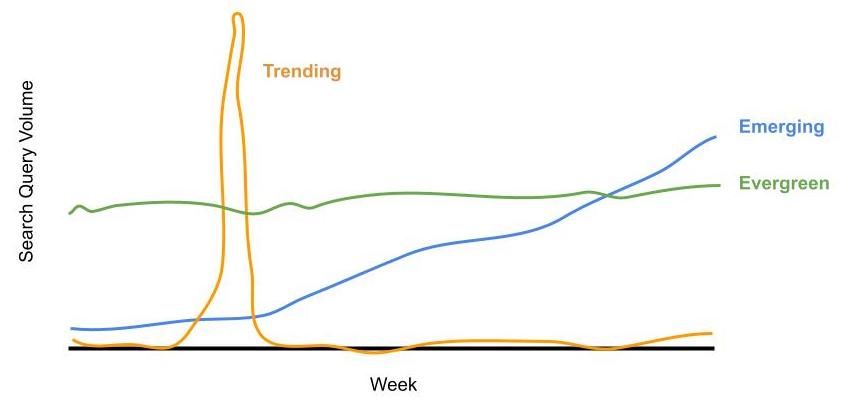
1b) Research & Prioritization
What makes a good keyword to go after? The ideal search query has:
- A lot of volume: Many people look this up every month, meaning you have many potential leads.
- High relevance/intent to purchase: The people searching are likely to be your customer.
- Low competition: You can serve this need better than other resources that rank for that query.
One approach is to prioritize the keyword ideas that score well in all of these categories. At Kapwing, we combine measures of these three values to yield an “opportunity score” for every keyword idea. This subject research is also helpful in identifying topics for YouTube videos.
Below is a table that illustrates this SEO approach for a company called Maslo, an AI-powered app that improves mental health through daily journaling and responsive prompts. The founder brainstormed keyword ideas like “online therapist” and “best meditation apps” (see Step 1a) and scored them across volume, relevance, and competition.
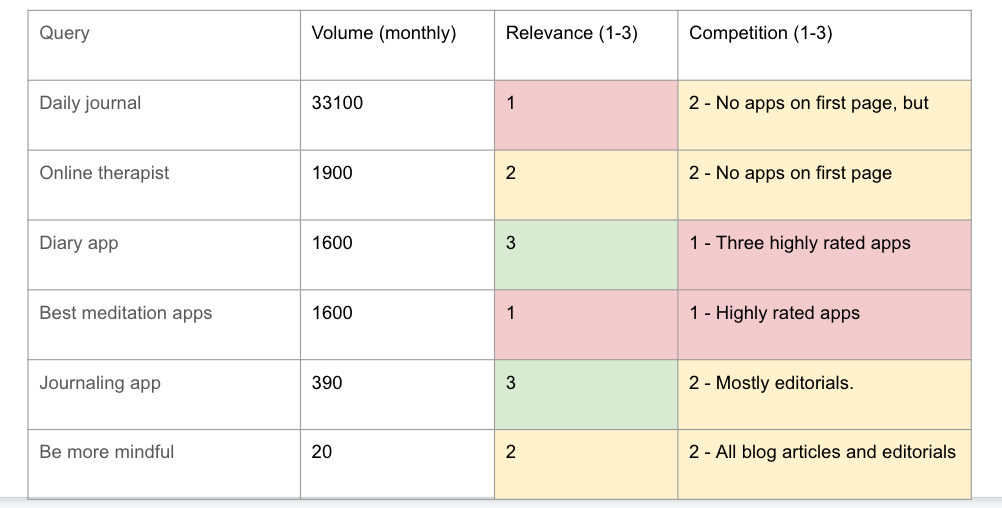
For example, while “daily journal” has the highest search volume, it is also the name of a popular newspaper, so it has low relevance for the product. In the end, this research showed that “daily app” or “online therapist” were probably better queries to target.
An alternative strategy is to programmatically generate pages so that you can create highly-relevant pages for many low-volume keywords (see Zapier’s growth story). A third approach is to leverage a community to create original content on pages, like Quora, Goodreads, and TripAdvisor. But these are more advanced strategies. If you're just getting started, do the research on 1000 queries to find the ones with the most potential.
1c) Optimize a Web Page for the Query
Once you’ve decided on the keywords you want to target, make a landing page optimized for each one:
- Build the landing pages specifically for the target query. Feature your target keywords prominently on your website (in the title, tags, etc)
- Write content and design graphics that answer the query directly
For example, this landing page on Kapwing obviously targets "Add Audio to Video." The target query is featured prominently in the title, repeated in the subtitle, and included in the URL. The original copy and images on the page help users with this task.
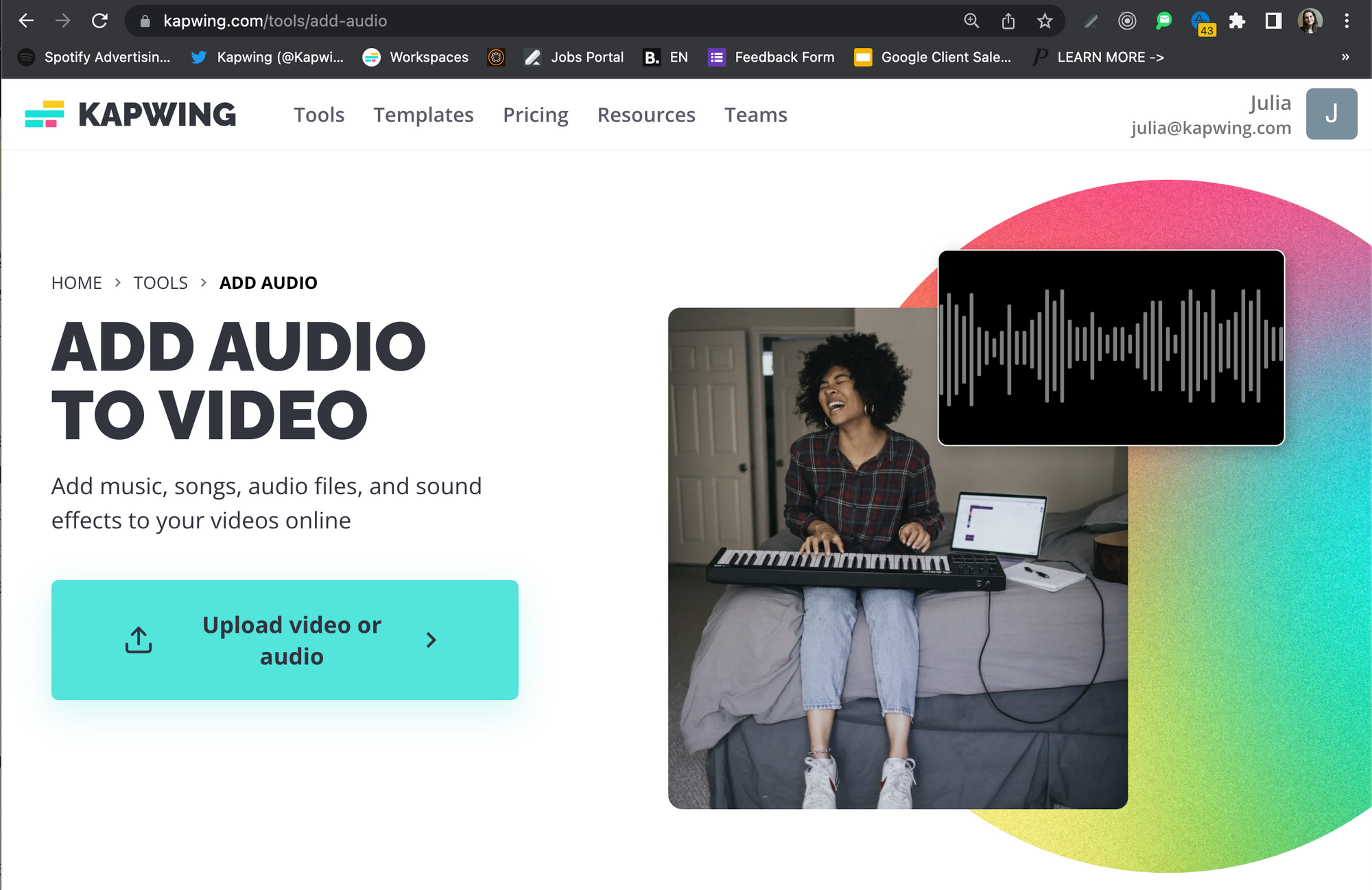
There’s a HUGE industry around “technical SEO” that promises to improve the layout of your pages for huge SEO wins. In my experience, technical SEO is vastly overrated. If you're a web developer, follow intuitive rules for targeting search queries with optimized web pages – legible text, good design, etc – rather than paying someone to make pages for you. I'd advise against spending too much time or money on technical SEO.
Et voila! You’ve accomplished step one: making a website that targets search queries. The next step is about actually getting those webpages to appear on Google. Most people find Step 1 easier than Step 2 as targeting search queries is fully under your control, whereas ranking depends on input from third parties.
Step 2) Rank on Google
The most important ingredient in ranking well on Google search are backlinks. A backlink is a hyperlink from another domain that points back to your website.
"Counting citations or backlinks to a given page... gives some approximation of a page's importance or quality."
Quote from the PhD dissertation that Google's founders, Larry and Sergey, wrote back in the 90s.
How to Build Links to Your Website
Getting backlinks — or “linkbuilding” — is mostly an art rather than a science or an engineering problem. There are thousands of strategies, but you have to be creative, making stuff on the internet that is worthy of linking to. There is absolutely no silver bullet.
I’ve written a blog post on backlinking, so, for the sake of brevity I will skip over link building in this article. At a high level, linkbuilding activities mostly fall into these categories: publicity, content marketing, embedded widgets, and pure hustle. SEO giants master all four.

To get ideas, study the SEO strategies of tech giants and jump on the low-hanging fruit. Ask your friends who have websites to mention you. Fill out profiles on startup directories. Beg bloggers to write articles. Put a newsworthy spin on your business and pitch it to journalists. Do stunts. All of these are ways to get links from other websites.
Another approach I recommend is to consider what your personal superpowers are, your unfair advantages. For example, I’m a good writer and also an engineer, so I’ve been able to tell compelling stories about technical topics for HackerNews. My cofounder is an excellent designer and engineer, so he’s excelled in spinning up fun, entertaining web apps like Cartoonify. Think about how you can turn your existing skills into shareable content on the web.
Rules of Link Building
Linkbuilding is mostly a creative exercise, but there are few basic rules to constrain your ideas:
- You can’t purchase links: If Google catches you paying websites to link to you, they will manually demote your website, killing your business. Polyvore, for example, died this way after years of “gray hat” SEO tactics. Of course, "you can't buy backlinks" is a vague and imprecise mandate, so webmasters must use their judgement and balance potential liability.
- Get links from authoritative websites: Not all links are created equal. Getting links from websites that produce good, original, insightful content about your domain is better than a spammy, empty, or new website or a publisher that mostly talks about an irrelevant subject.
- If possible, surround your links with your target keywords: Ideally the anchor text — the words wrapped in the blue hyperlink — has something to do with what you sell or provide.
- Facebook, Instagram, and Twitter don’t count: Some websites, including most social media platforms, don’t allow Google to crawl them and index the links they have.
- It takes a few weeks for Google to index links, but backlinks lasts forever. It will take weeks for your ranking to improve, especially when you’re getting started. Be patient.
- Must link your domain: www.kapwing.com. NOT a subdomain, like blog.kapwing.com. NOT your Substack, YouTube or Medium account. At Kapwing, we use Ghost, an open-source CMS, to manage our blog.
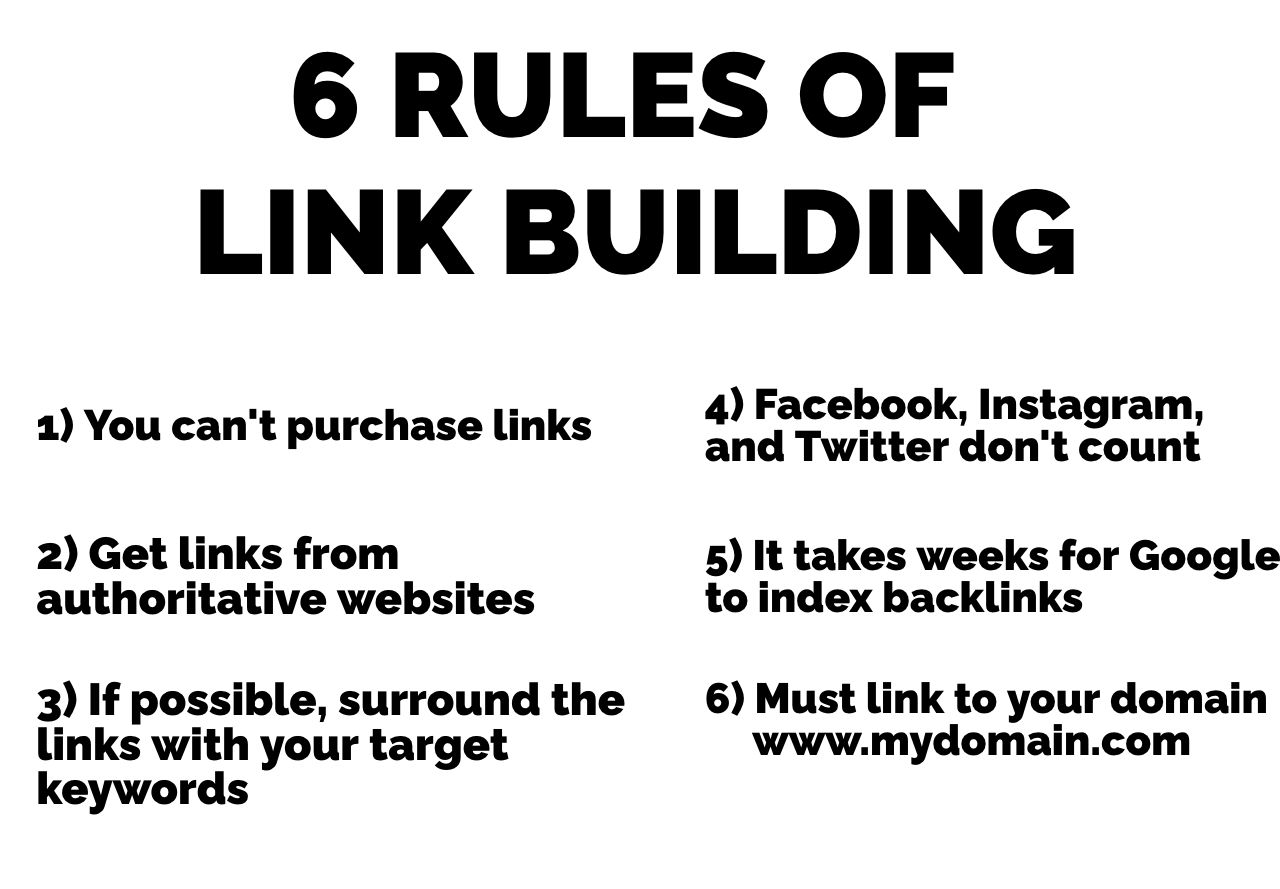
SEO Misconceptions
1) You should outsource SEO
My cofounder and I have talked to several SEO agencies, hired and fired a highly-experienced SEO Director, and worked with a backlinking agency for $50,000 earlier this year, and none of them did better than Eric and I when we were trying to figure it out ourselves in a scrappy, organic way. Anyone can do SEO, as long as you have the ability to make new webpages. You do not need any formal training or education beyond reading this blog post. Most successful entrepreneurs become an expert in sales, SEO, or paid ads, so pick your favorite and go deep.
2) Technical optimizations can make a huge difference
In my opinion, technical optimizations matter for 1 to n SEO, not 0 to 1. Even for Kapwing, with millions of monthly-active users, a technical SEO overhaul last fall had little impact on search position.
3) There’s an SEO “secret” or “silver bullet” that you’re missing
Like I mentioned, this is not the case. One of the reasons SEO is a great channel for startups is that it is hard for large mega-companies to scale the creativity and ingenuity required to identify search opportunities and earn backlinks. Embrace the creative challenge of making awesome content or empowering a community to make content.
4) SEO == Blogging
Your website can have great domain authority without having a blog.
There are two discrete steps for SEO: make new web pages that rank for a specific query and rank for that query. Blogging achieves both because a new blog post is a webpage in itself and it has content that could earn backlinks.
However, there are many other activities that achieve step 1 or step 2, and it may be much more effective to pursue the two tasks separately. In my opinion, people often conflate building webpages with building backlinks, constraining them to blog post ideas rather than activities better suited for their skills.
Conclusion
SEO is a slog, requiring ongoing maintenance, hustle, and continued learning. But it’s also a surprisingly equitable playing field rewarding those who add value. At Kapwing, we’ve grown our business to millions of ARR mostly on the back of SEO, beating out huge competitors like Adobe and Canva who haven't moved as quickly.
I hope that this Guide to SEO gives you clarity on how to get started with SEO. Readers of this guide hopefully appreciate now how much Google impacts our lives; searchers trust it so much that they forget about the marketers, media publishers, and entrepreneurs manipulating their choices under the hood of Google’s algorithm. In this way, SEO is the hidden algorithm of the internet. Mastering it will help you race towards product market fit.
Special thanks to Village Global, one of Kapwing's seed investors. Ben Casnocha encouraged me to write this article after I led an SEO workshop at the annual Village Global retreat in 2021. I appreciate the support and the backlink!


